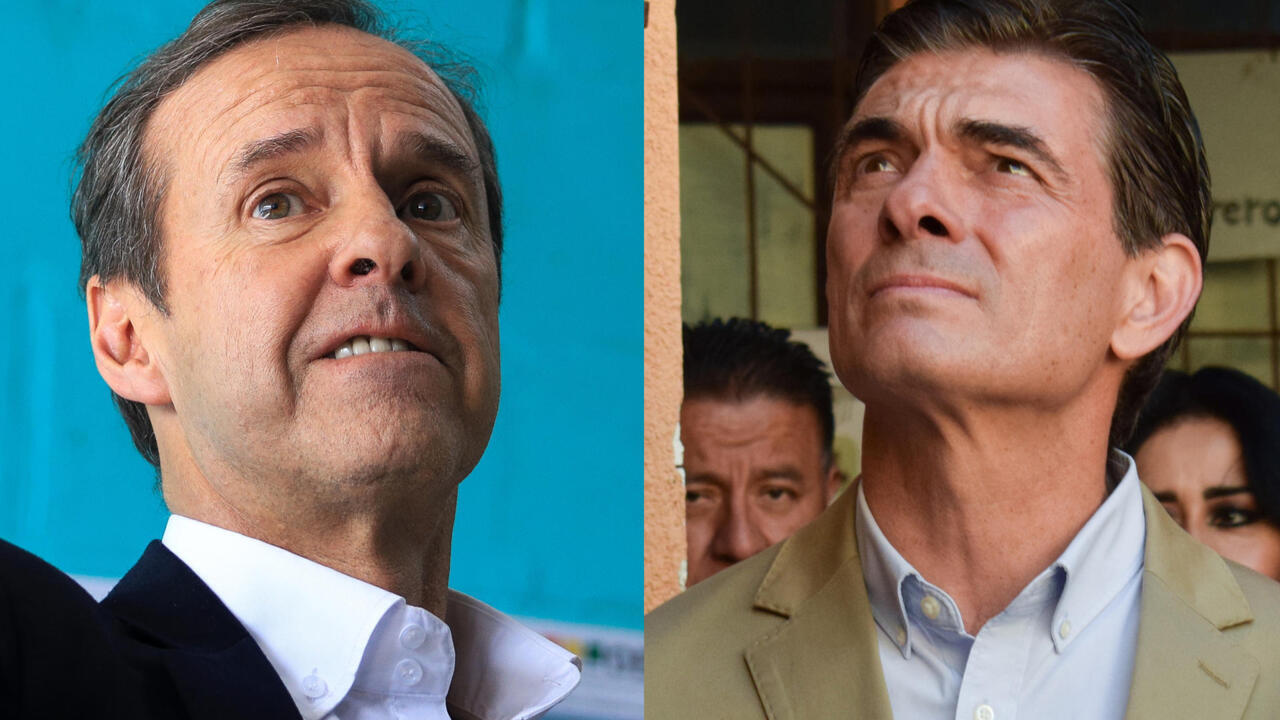 Members of the CST UIT-QI, which refers to the Corrente Socialista dos Trabalhadores (CST) or socialist chain of workers, protesting on Tuesday night outside the COP30 venue. Credit: Joyce Chimbi/IPS
Members of the CST UIT-QI, which refers to the Corrente Socialista dos Trabalhadores (CST) or socialist chain of workers, protesting on Tuesday night outside the COP30 venue. Credit: Joyce Chimbi/IPSBELÉM, Brazil, November 12 (IPS) - In a departure from the past two COPs, in Dubai and Azerbaijan, there have been increasingly intense demonstrations from activists at the COP30 venue in Belém, the capital of the northern Brazilian state of Pará.
At times there are up to four protests in just one day. One at least grabbed the headlines and there were moments of pandemonium on Tuesday night (November 11) when dozens of indigenous and non-indigenous activists stormed into the COP30 venue in the capital of the northern Brazilian state of Pará as thousands of delegates were leaving the venue, having wrapped up the day’s events.
Push had come to shove at the entrance as a crowd of protesters chanted and shouted holding banners, and managed to push a door off its hinges and injure at least two security guards in the confrontation.
The Tuesday night intrusion was the most intense yet and seemed to be one big protest made up of various small groups, all angrily demanding access to the COP30 venue.
Following the incident, the COP30’s main entrance was undergoing repair late into the night. The Brazilian government has encouraged freedom of expression and provided expanded spaces for civil rights activities.
In a departure from past COPs, there have been increasingly intense demonstrations from activists about various issues near the COP venue. At times there are up to four protests in just one day. The Tuesday night intrusion was the most intense yet and seemed to be one big protest made up of various small groups, all angrily demanding access to the COP30 venue.
IPS caught up with a group of protesters still outside the COP30 venue moments after the protesters were pushed out of the venue.
They included Jeane Carla, a 24-year-old activist and member of the CST UIT-QI, which refers to the Corrente Socialista dos Trabalhadores (CST) or socialist chain of workers, and is the Brazilian section of the international revolutionary socialist organization, the Unidade Internacional dos Trabalhadores – Quarta Internacional (UIT-QI). This is a social organization and strongly promotes socialist values.
“We are protesting here in Belém for climate health. We want to speak about the environmental catastrophe that we are living through today, in our time. So, we came walking, together with the Indigenous people and the youth, and we went through several blockades, including the army’s own blockade,” she said.
“There were even repressions, but we are here,” she continued, “we came in front of COP30 to put forward what we believe. The need for the fight in defense of the climate systems goes beyond the defense of the Indigenous people and the defense of the environment, and, unfortunately, COP30 needs to start providing a way out, as it hasn’t yet. It must.”
Carla listed her prescriptions for COP30.
“First of all, COP30 should be a space formed by the workers and the youth so that we can present concrete and real alternatives to reverse the climate crisis. In our perspective, it would be necessary to build a new model of society and a new world order, to destroy the capitalist system, which is the axis of environmental destruction.”
“As a matter of urgency, COP30 must put up a real fight against climate change.”
 Security personnel form a human shield at the exit of the COP30 venue during the violent confrontation with protestors that took place at the main entrance. Credit: Farhana Haque Rahman/IPS
Security personnel form a human shield at the exit of the COP30 venue during the violent confrontation with protestors that took place at the main entrance. Credit: Farhana Haque Rahman/IPS“If I could meet the COP president, I would speak to him about the need to preserve the environment, to truly preserve it, alongside the Indigenous people. I would also speak about the need to put life above profit.”
“We are in dire need of an effective transformation of the environment, which goes beyond the struggle and the organization of the indigenous people, the workers, and the youth so that we can fight for a better world. A world that goes beyond exploitation and oppression. It is my strong belief that such change can only happen with a government of the workers and youth.”
The socialist group was not the only one. There were those with a yellow flag protesting oil drilling in the Amazon. Brazil’s environmental agency, IBAMA, granted Petrobras, which translates to Brazilian Petroleum Corporation, a license to explore oil in the marine biodiversity-rich Foz do Amazonas Basin. This area is home to Indigenous, Quilombola, and traditional communities that rely on the coastal Amazon for their survival. The license was issued less than a month before the UN climate summit in the Amazon City of Belém.
Another group had a large Palestinian flag. Others protested about ongoing industry and developments in the Amazon forest. The Amazon rainforest is known for its immense biodiversity, hosting 10 percent of Earth’s known species, and for its role in regulating global climate by storing vast amounts of carbon.
The Amazon is the world’s largest tropical rainforest, with a significant impact on regional weather patterns and a home to many indigenous peoples and cultures. Its river accounts for 15–16 percent of the world’s total river discharge into the ocean. The Amazon River flows for more than 6,600 km.
Most importantly, the Amazon is home to millions of Indigenous people, who number at least 2.2 million and are part of more than 300 distinct ethnic groups. These communities have lived in the Amazon for millennia and their ancestral territories are crucial for the region’s biodiversity and the global climate
Spanning 6.7 million km², or a size twice the size of India, the Amazon Biome, a large naturally occurring community of flora and faunaoccupying a major habitat, is simply unrivalled. There was a banner that read, ‘Our forests are not for sale.’ Others wore T-shirts that read ‘Juntos,’ which translates to ‘together.’
 A peaceful protest at COP30 as demonstrations intensify. There have been as many as four vibrant protests every day, agitating over various issues. Credit: Joyce Chimbi/IPS
A peaceful protest at COP30 as demonstrations intensify. There have been as many as four vibrant protests every day, agitating over various issues. Credit: Joyce Chimbi/IPSOverall, calm was quickly restored and the incident will no doubt significantly shape discourse in a COP that has a record-breaking number of Indigenous participants, with estimates of around 3,000 representatives from across the globe.
COP30 has the highest Indigenous mobilization in the history of the UN climate change conferences and by a large margin. The high participation is a result of a concerted effort by the Brazilian government and Indigenous organizations to place Indigenous voices at the center of the climate debate.
Overall, more than 1,000 Indigenous leaders are participating in the official negotiations within the “Blue Zone,” or a restricted access area for delegates, with another 2,000 in the public “Green Zone.”
Additionally, the Brazilian presidency has established a “COP Village” at the Federal University of Pará (UFPA) to serve as accommodation and a venue for cultural and political activities for the Indigenous participants, fostering community and dialogue.
The Brazilian presidency has also created the “People’s Circle” as an official mechanism to ensure meaningful participation from civil society, including Indigenous peoples and traditional communities, in the conference’s discussions. This significant presence highlights the widely recognized role of Indigenous peoples as essential guardians of biodiversity and a crucial part of the solution to the climate crisis.
© Inter Press Service (20251112152738) — All Rights Reserved. Original source: Inter Press Service

 4 hours ago
1
4 hours ago
1










 English (US) ·
English (US) ·